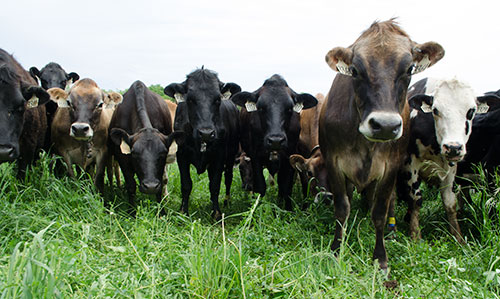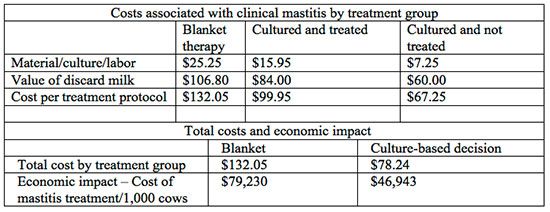
We're under a microscope. Whether the topic is BST, antibiotic use or cow/calf separation, our consumers have taken an interest in our actions.
When it comes to antibiotic use, research shows that treatment of clinical mastitis is the primary trigger for antimicrobial administration on-farm. To better use and preserve the tools we have to treat mastitis, informed decisions must be made; taking a pathogen-based approach to treatment enables us to do so.
A recent field trial, conducted on a 3,500-cow dairy by Cornell University's Quality Milk Production Services, compared blanket intramammary antibiotic therapy to a pathogen-based treatment protocol. Animals with clinical mastitis severity scores of one or two were assigned to either the blanket or culture-based therapy group; cows with a score of three were treated immediately.
Cattle in the blanket therapy group received one tube of ceftiofur hydrochloride (Spectramast) for five days according to the label. Cows in the culture group, meanwhile, received no treatment for 24 hours. Upon obtaining results, Staph ssp., Strep ssp., and Enterococcus-positive cows were treated twice with cephapirin sodium (ToDay). Cows positive for other organisms or exhibiting no growth were not treated.
"A total of 489 clinical mastitis events were enrolled," said Daryl Nydam, Cornell University, at the National Mastitis Council regional meeting. Of these, 247 were assigned to the culture group, while 242 cows received blanket therapy. Two-thirds of the culture group (164 cows) received no treatment, while 83 received Today.
Between the two groups, no differences existed in the number of days to clinical cure, next test day milk production or average linear score at the next test day. The risk of culling within 30 or 60 days of infection also did not differ between treatments. The mean days out of the bulk tank, though, were significantly greater for the blanket therapy group (8.9 days) compared to the culture group (6.9 days).
A partial budget analysis compared the two approaches relative to cost of therapy, time spent in the hospital pen and discarded milk. Each tube of Spectramast was valued at $3.80, while Today was valued at $3.10 per tube. Labor cost was assessed at $15 per hour, with a cost of $6 per culture. Milk discard value was based on a production level of 60 pounds per day for mastitic cows at $20 per hundredweight milk.

"The use of pathogen-based therapy to guide the treatment of clinical mastitis resulted in reduced treatment costs, increased volume of saleable milk and allowed for a 67 percent reduction in IMM use with no impact on therapeutic use. There was also a significant savings of over $30,000 per 1,000 cows," concluded Nydam.

Amanda Smith was an associate editor and is an animal science graduate of Cornell University. Smith covers feeding, milk quality and heads up the World Dairy Expo Supplement. She grew up on a Medina, N.Y., dairy, and interned at a 1,700-cow western New York dairy, a large New York calf and heifer farm, and studied in New Zealand for one semester.








